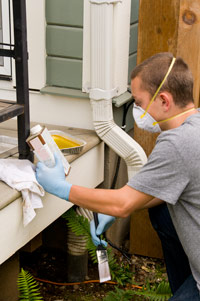Home renovations add value to your property and make it more attractive. The bathroom and kitchen are two areas that benefit greatly from being updated and improved. However, there are always dangerous chemicals you should watch out for when working on home projects. From modern chemicals to asbestos-laden tiles and insulation in older homes, here are a few of the dangers you should be on the lookout for.
Lead-Based Paint
Lead was commonly used in paints, and it may also be in the stains on your baseboard and wood trim around the house. Lead-based paint is dangerous only if it is chipping, flaking or you are sanding it away. You can have the trim and walls of your house tested for lead. If the test is negative, then you can proceed with your scraping and sanding. If the test comes back positive, then you will have to be a little more careful. If the paint is peeling and damaged, then you will have to call in a professional cleanup team to handle the problem. If the paint is not peeling or damaged, you can seal the lead in under a fresh layer of safe latex paint. Always wash your hands well and clean tools thoroughly after working around any lead-based paint.
Fumes from Paints, Glues and Cleaners
The Dangers of Asbestos Abound
Asbestos continued to be used in residential properties well into the 1970s. It was not fully banned until 1989, so this means that your older home could be filled with asbestos. The tiles on your floor that you never liked could easily have asbestos, and the insulation in your walls may contain the carcinogen. Asbestos exposure is a direct cause of mesothelioma, so this is very serious. Like lead, it only becomes an issue if the material is breaking or chipping. An experienced contractor can tell you if the insulation or other materials contain asbestos, and professionals can safely remove it for your health. Visit http://www.cancer.gov/cancertopics/factsheet/Risk/asbestos for more information on the dangers of this material and how commonly it was used.
When working on home renovations, your safety is the most important factor. Invest in proper ear and eye protection if you will be using power tools, and make sure you have a breathing mask to protect yourself from fumes. Work in well-ventilated areas, and always be on the lookout for the presence of lead-based paint and asbestos building materials. A watchful eye now and the right removal techniques can protect you from serious illnesses and even cancer later.






